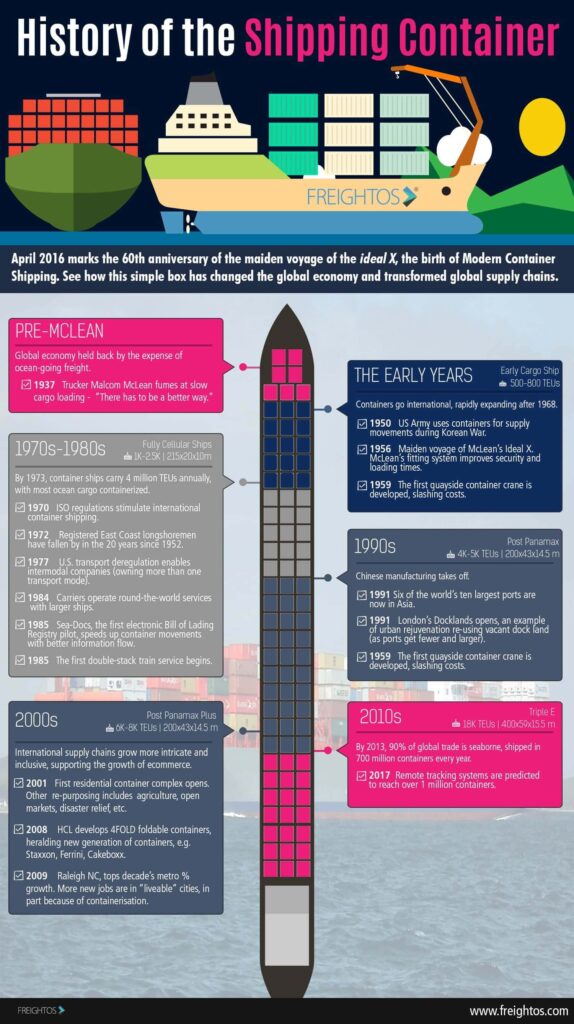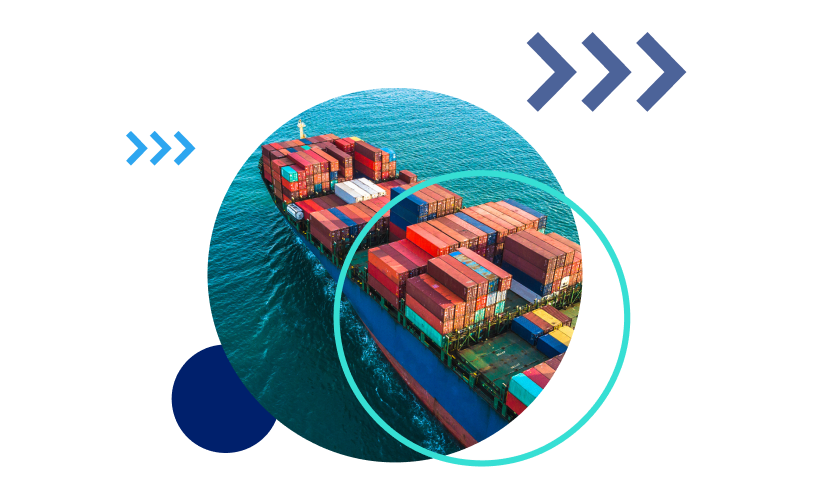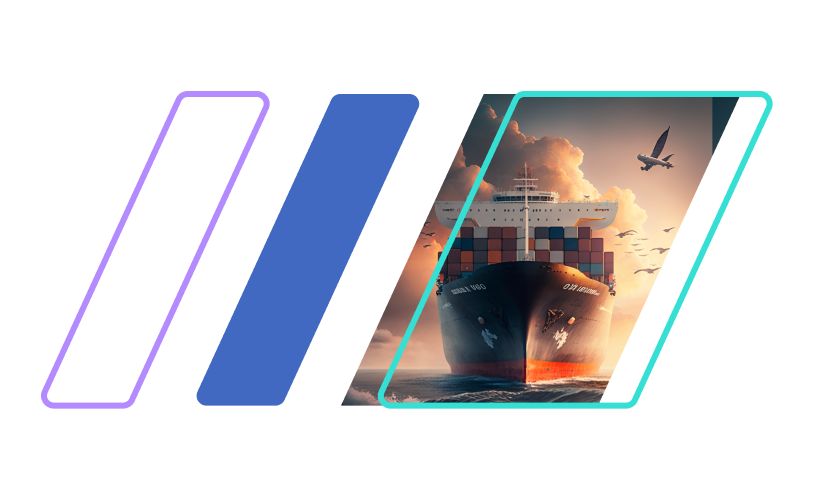On April 26, 2016, the world commemorated the 60th anniversary of a transformative moment in history: the maiden voyage of the Ideal X. This unassuming vessel marked the birth of modern container shipping, an innovation that would go on to play a pivotal role in propelling the global economy into a new era.
At the forefront of this revolutionary change was the visionary Malcolm McLean. His vision and tireless efforts reshaped the way goods were transported across the world. The modern shipping container wasn’t just an innovation within a single industry; it was a catalyst for profound and far-reaching changes. It rewrote the rules of supply chain logistics, forever altering the dynamics of both domestic and international economies.
This containerization of goods streamlined the process of shipping, making it faster, more efficient, and cost-effective. As a result, it lowered the barriers to international trade, spurring economic growth and driving trillions of dollars in annual trade worldwide. It not only facilitated the transportation of goods but also revolutionized entire societies by fostering globalization and cultural exchange. From the factories in Asia to the shelves in Western stores, the shipping container became the unassuming yet indispensable hero in the narrative of globalization, linking disparate corners of the world and reshaping the landscape of commerce.
The story of the modern shipping container is a testament to the power of innovation and its capacity to transcend boundaries, both physical and economic. Its impact is not confined to one industry but has rippled across the globe, shaping our interconnected and interdependent world in ways that we often take for granted.

| Malcom McLean | |
| Infrastructure Development | |
| Container Regulation | |
| International Economy | |
| Economic and Social Restructuring |
The Shipping Container: Before 1956
For centuries the expense, risk, and frustration with ocean freight held back the expansion of the international economy, despite the invention of the steam invention. Break-bulk-loaded cargo was poorly secured and required a Tetris-like approach to handle diverse sizes of packages. Loading and unloading were particularly troublesome. Risks include delays, pilfering, damage, and loss.
Did You Know That …
Early examples of intermodal containers include railroads from 1830s (various-sized containers), and Pennsylvania Railroad regular container service (1929).
| Year | Category | Event | Significance |
|---|---|---|---|
| 1937 | Small trucker, Malcom McLean, fumes at slow loading of cargo aboard ship – “There has to be a better way.” | The founder of modern intermodal container shipping conceives the concept of the modern shipping container. | |
| 1950 | US Army uses the “Transporter” container, developed four years earlier for removals, for Korean War supply movements. | First use of a modern container for ocean freight. | |
| 1951 | Western Europe selects container standards for rail, also intended for ship and truck. | First shipping container regulations, promoting international container shipping. | |
| 1955 | McLean purchases a steamship and a railroad terminal company. He forms Sea-Land Service, and experiments with container design. | First infrastructure to support intermodal container shipping. |
The Early Days: 1956-1960s
Following McLean’s patent, containerized shipping saw a series of firsts from 1956, as container services expanded to become international, transatlantic, and transpacific. From 1968, with intermodal container shipping proven, the container fleet rapidly expanded.
Did You Know That …
It wasn’t just about freight. A patent was filed in 1962 for using shipping containers as touring exhibition booths.
| Year | Category | Event | Significance |
|---|---|---|---|
| 1956 | Ideal X (aka Maxton) ships 60 containers on deck from Newark, N.J. to Houston, where the shipping containers are loaded onto trucks. The next year, Pan Atlantic ship Gateway City began the regular service. | First intermodal cargo transportation (containers are stacked on deck). Then, the first storage of containers is below deck. | |
| 1956 | McLean’s invention of the system called fitting, helps lift and fixing of containers onto vehicles and fixing to each other. Loading costs plummet. From $5.86, they are currently $0.16 per ton. | Fitting facilitates cargo security and enables the automation of container handling processes. | |
| 1959 | The first quayside container gantry crane, “Portainer”, is developed by Paceco. | Gantry cranes slash loading times, cost, damage, and pilfering. | |
| 1962 | Elizabeth-Port Authority Marine Terminal, N.J. opens. | First dedicated container terminal. | |
| 1966 | Sea-Land initiated the first transatlantic service, followed in 1967 with the first transpacific service. McLean convinces the US Army that shipping containers provide a more reliable service (also eliminating dockside pilfering by Viet Cong sympathizers). Nascent Asian-US trade drives the return service. Grace Line had instituted the first international service, US to Venezuela, in 1962. | The beginning of the Asia-Advanced Economies trade boom. Large carriers can no longer ignore containerized shipping, signaling the demise of the conventional cargo ship, lengthy stays in port, etc. | |
| 1968-1970 | International standards promote the development of intermodal container shipping. | ISO 338, ISO 790 and ISO 1897 set standards for containers. | ISO 338, ISO 790, and ISO 1897 set standards for containers. |
Rapid Expansion: The 1970s
Once the concept was validated, the container shipping industry grew exponentially in the 70s and 80s. By 1973, US, European, and Asian container ship operators were carrying 4 million TEUs. Export manufacturing started moving away from ports.
Did You Know That …
In the early 1970s, UK architect Nicholas Lacey wrote his thesis about converting shipping containers into habitable dwellings.
| Year | Category | Event | Significance |
|---|---|---|---|
| 1972 | Shipping between Europe, S.E. and E. Asia, South Africa, Australia/NZ, North America, and South America are all largely containerized. | The development of intermodal container shipping is impacting other transport modes. | |
| 1977 | With the growth of transpacific trade, McLean teams with Southern Pacific Railroad to build the first double-stack train car. | Development of intermodal container shipping is impacting other transport modes. | |
| 1977 | Airline Deregulation Act became law, the first of a wave of American transport deregulation that continued through until the mid-1980s. | Companies can now own stakes in several transport modes, enabling the growth of intermodal carriers. | |
| 1979 | The Airline Deregulation Act became law, the first of a wave of American transport deregulation that continued through until the mid-1980s. | Most international ocean cargo is now containerized. |
90% of All Ports: The 1980s
90% of countries have container ports, up from 1% in 1966. By 1983, container ships were carrying 12 million TEUs, with trade routes extending to the Middle East, South Asia, and Africa.
Did You Know That …
In 1989, the world’s largest shopping mall built from shipping containers, with 16,000 vendors, opened in Odessa, USSR.
| Year | Category | Event | Significance |
|---|---|---|---|
| 1980 | Competition for container traffic is increasingly giving way to coordination between the ports of Los Angeles and Long Beach. | Example of the increasing coordination between seaports as a result of containerization. | |
| 1984 | McLean, now owning US Lines, develops a new carrier business model of jumbo container ships providing a round-the-world service, intersecting with smaller, regional ‘feeder’ services. Costs fall and service improves. | Along with the new sea-carrier alliances (effectively merging fleets), this supports Just In Time (JIT) production supply chains. | |
| 1984 | Over 100 double-stack container trains, each a mile long, are now operating across U.S. | Containerization is driving technology in other transport modes. | |
| 1985 | Sea-Docs is the first electronic Bill of Lading Registry pilot (albeit for oil cargo). | Carriers look to process improvements to increase container cargo shipping. | |
| 1989 | The first all-double-stack train is developed by APL and UP Railroad. Its first trip includes transfers to two other railroads. | Over 100 double-stack container trains, each a mile long, are now operating across the U.S. | Intermodal companies make car operations more flexible, especially for linking to other lines. |
Global Trade Takes Off: The 1990s
More types of goods are traded economically, and much manufacturing is transferring to developing economies. The rapidly developing Chinese economy rescues hundreds of millions of Chinese citizens from poverty.
Did You Know That …
In 1994, a BBC series is made on the conversion of shipping containers for office space, the first mass media exposure of the concept of using containers for other purposes.
| Year | Category | Event | Significance |
|---|---|---|---|
| 1990 | China’s annual GDP per capita growth reached up to 13% per capita during the 1990s. | Containerization (790% increase) impacted trade growth much more than bilateral free-trade agreements (45%) or GATT membership (285%). | |
| 1991 | Ceiling year of a study of 22 industrialised countries (Uni. of Nottingham) which isolates the impact of containerization on bilateral trade. The study also isolates the impact of bilateral free-trade agreements and GATT membership. | Example of urban rejuvenation re-using vacant dock land (as ports get fewer and larger). | |
| 1991 | Six of the ten world’s largest ports are in East or S.E Asia. | Intermodal container shipping dramatically changes the international economy. | |
| 1999 | China’s annual GDP per capita growth reaches up to 13% per capita during the 1990s. | Canary Wharf buildings in London’s Docklands open. What was once the world’s largest seaport closed to shipping in 1969. | Developing economies can now easily exploit existing containerized supply chains. |
Innovating: The 2000s
International supply chains grow more intricate and inclusive, supporting the growth of e-commerce.
Did You Know That …
The first of 14 residential shipping container complexes now built in the UK is completed in 2001.
| Year | Category | Event | Significance |
|---|---|---|---|
| 2001 | Malcom McLean, the “Father of Containerization”, dies aged eighty-seven. Two books on McLean are published in 2006, marking the 50th anniversary of the first commercial intermodal container service. | His achievements have been recognized by the Intl. Maritime Hall of Fame, Fortune and American Heritage magazines, amongst others. | |
| 2008 | HCI markets the 4FOLD foldable container. Others follow, including Staxxon fold and nest containers, Ferrini lightweight collapsible containers, and Cakeboxx doorless containers. | Potential new generation of containers, reducing the cost of unproductive repositioning and storage of empty containers, or maximizing load space. | |
| 2009 | Raleigh-Durham-Cary N.C. tops decade’s metro % growth. Employment in advanced economies is free to move to “more liveable” locations. | Modern container shipping changes the geography of employment. |
Today: The 2010s
By 2013, 90% of global trade is seaborne, shipped in 700 million containers every year. In 2014, the shipping ports of America received $1.73 trillion worth of goods.
Did You Know That …
In 2010, Freight Farms established the first use of containers for agriculture. Containers are now also re-purposed for disaster relief and even backdrops for K-pop videos. The tech industry follows suit – Google creates a $35 million boat made of shipping containers that uses shipping containers for servers that power the tech giant’s search capabilities.
| Year | Category | Event | Significance |
|---|---|---|---|
| 2011 | China surpasses Japan as the world’s second-largest economy. It then overtook the US in 2014. | Modern container shipping is changing the world structure. | |
| 2017 | Use of remote tracking systems in containers is expected to reach over one million. | New technology is improving service reliability. |



